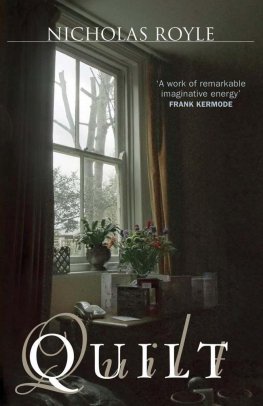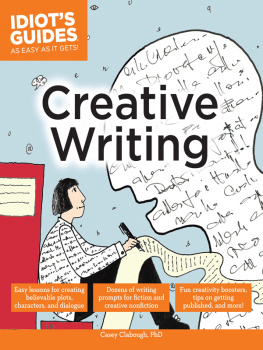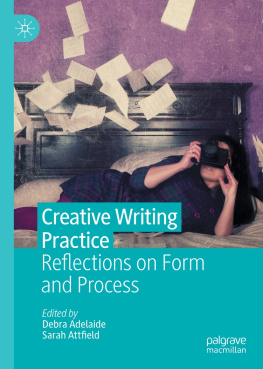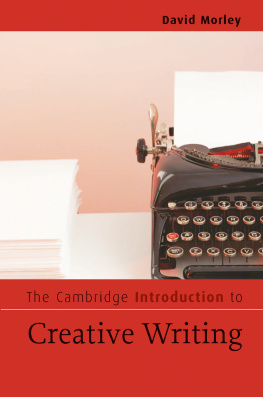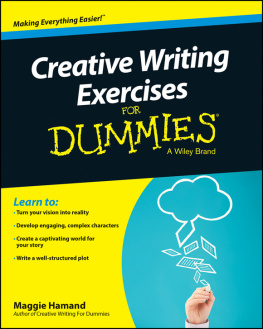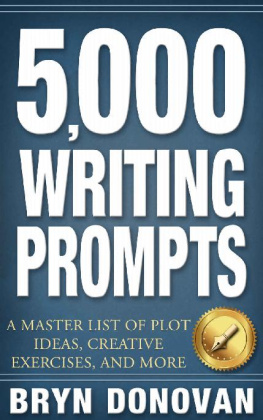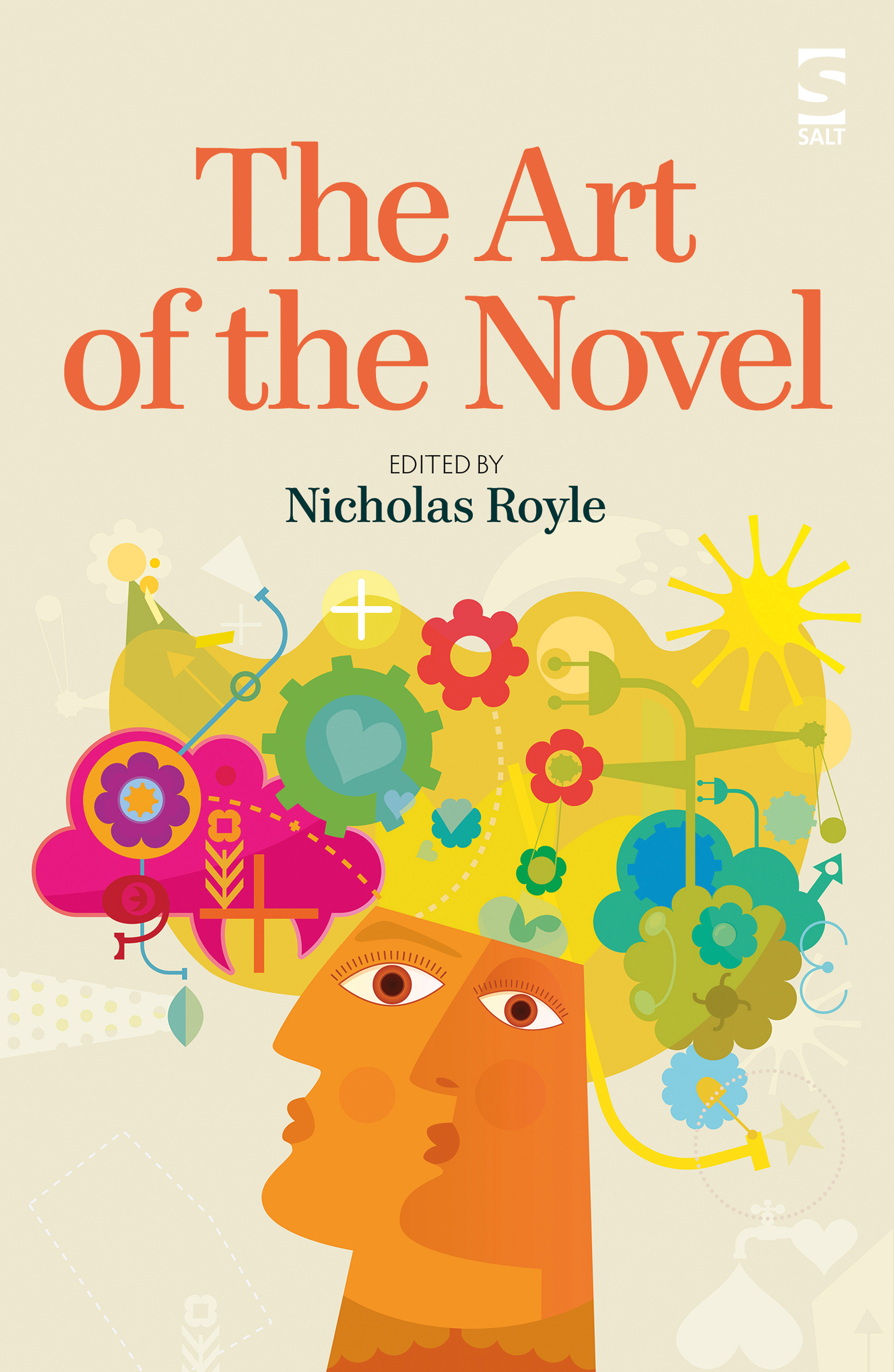The Art of the Novel
How do you write a novel?
Practising novelists and teachers of creative writing reveal their working methods and offer practical advice. Subjects covered range from magic realism to characterisation, surrealism to historical fiction, via perspective, plot twists and avoiding being boring, among many others.
This book is for
creative writing students
writers and readers of novels
teachers of creative writing
With contributions from Leone Ross, Tom Bromley, Jenn Ashworth, AJ Dalton, Nikesh Shukla, Stella Duffy, Mark Morris, Alison Moore, Nicholas Royle, Alice Thompson, Kerry Hudson, Toby Litt, Livi Michael, Joe Stretch, James Miller, Sarah Butler, Will Wiles, Graeme Shimmin
Featuring
Eighteen specially commissioned essays
Creative writing exercises
Top tips
Lists of recommended novels
Nicholas Royle is the author of more than 100 short stories, two novellas and seven novels, most recently First Novel (Vintage). His short story collection, Mortality (Serpents Tail), was shortlisted for the inaugural Edge Hill Prize. He has edited seventeen anthologies of short stories, including The Time Out Book of New York Short Stories (Penguin), Murmurations: An Anthology of Uncanny Stories About Birds (Two Ravens Press) and five volumes of Best British Short Stories (Salt). A senior lecturer in creative writing at the Manchester Writing School at MMU and head judge of the Manchester Fiction Prize, he also runs Nightjar Press, publishing original short stories as signed, limited-edition chapbooks.
Also by Nicholas Royle:
NOVELS
Counterparts
Saxophone Dreams
The Matter of the Heart
The Directors Cut
Antwerp
Regicide
First Novel
NOVELLAS
The Appetite
The Enigma of Departure
SHORT STORIES
Mortality
ANTHOLOGIES (AS EDITOR)
Darklands
Darklands 2
A Book of Two Halves
The Tiger Garden: A Book of Writers Dreams
The Time Out Book of New York Short Stories
The Ex Files: New Stories About Old Flames
The Agony & the Ecstasy: New Writing for the World Cup
Neonlit: Time Out Book of New Writing
The Time Out Book of Paris Short Stories
Neonlit: Time Out Book of New Writing Volume 2
The Time Out Book of London Short Stories Volume 2
Dreams Never End
68: New Stories From Children of the Revolution
The Best British Short Stories 2011
Murmurations: An Anthology of Uncanny Stories About Birds
The Best British Short Stories 2012
The Best British Short Stories 2013
The Best British Short Stories 2014
Best British Short Stories 2015
Published by Salt Publishing Ltd
12 Norwich Road, Cromer, Norfolk NR27 0AX
All rights reserved
Selection and introduction Nicholas Royle, 2015
Individual contributions the contributors , 2015
The right of Nicholas Royle to be identified as the editor of this work has been asserted by him in accordance with Section 77 of the Copyright, Designs and Patents Act 1988.
This book is in copyright. Subject to statutory exception and to provisions of relevant collective licensing agreements, no reproduction of any part may take place without the written permission of Salt Publishing.
Salt Publishing 2015
Created by Salt Publishing Ltd
This book is sold subject to the conditions that it shall not, by way of trade or otherwise, be lent, re-sold, hired out, or otherwise circulated without the publishers prior consent in any form of binding or cover other than that in which it is published and without a similar condition including this condition being imposed on the subsequent purchaser.
ISBN 978-1-84471-883-2 electronic
NICHOLAS ROYLE
Introduction
F OR A NUMBER of years, teachers of creative writing have been growing steadily more aware of a baffling contradiction at the heart of British culture. We have enjoyed this privileged view precisely because we are also, by requirement, practising writers and published authors. As reading or reading anything other than sub- Penthouse letters page fantasy dressed up as erotica continues to acquire the cachet of a marginalised activity, writing, on the other hand, is all the rage. To put it another way, as print and ebook sales decline with the regrettable exception of sub- Penthouse letters page fantasy dressed up as erotica the numbers of people wanting to write books continue to rise.
Aspiring writers have been able to apply to study for an MA in creative writing in the UK since Malcolm Bradbury and Angus Wilson opened the door at the University of East Anglia in 1970. Many universities eventually followed suit, setting up creative writing departments, offering MAs and undergraduate degrees, and now some of the MAs are even turning into MFAs, not forgetting creative/critical PhDs, while writing courses are also being offered by publishers, newspapers, literary agencies and, quite likely by the time this book is printed, breweries, supermarket chains and global internet giants. Predating even UEA, of course, though not offering academic qualifications, were John Fairfax and John Moat, founders of Arvon, who started running residential courses for wannabe writers in 1968, long before the word wannabe was first uttered.
But this book is not just for students of creative writing. Its for readers, for readers of novels, for readers curious about novels and maybe curious about writers, for other writers, maybe short story writers or poets or scriptwriters who want to write novels, for other novelists who might feel a need to hit the refresh button, to pick up some tips, for novelists who are also teachers of creative writing. We never stop learning how to write better or how to improve our teaching.
All the contributors are practising novelists; more than half of them are also, or have been, teachers of creative writing. Each contributor writes about a different aspect of writing novels; some are extremely practical, while others tend more towards the inspirational. Some do both. A typical chapter consists of an original article or essay followed by a favourite creative writing exercise, three top tips and a list of ten novels that may or may not reflect the subject of the essay. I have edited, for the most part, with a light hand, which is not to say Ive tolerated missing commas or incorrectly used semi-colons, but within the general structure described above I have allowed a degree of latitude. For instance, the lists of novels look different. Some contributors have taken me at my word and provided a simple list, while others have annotated them, and rather than strip out their annotations or demand commentary from those who didnt add any, I decided to allow variety to prevail, as it does in these writers novels.
One writer calmly discusses a novel I have implicitly attacked in this introduction; another contributes an exercise that seems at odds with what I regard as the only way to write fiction, long or short, which is forever to be withholding information. But I have resisted the temptation to interfere in such cases, since its quite possible theyre right and Im wrong, or that there is no right and wrong. The tone, generally, is informal, even chatty, not that of the academic essay with complicated referencing and endnotes, although there is, as there should always be, one notable exception.
We have not tried to cover everything. We havent devoted chapters to every genre or every skill, to every technique or element of the novel. Theres a chapter that dwells on matters mostly away from the writing desk and theres a chapter that focuses with intense concentration on a single sentence. The fact is its good to hear a multiplicity of voices, to consider different approaches; thats what this book is all about. Actually, what its really all about is me getting hold of a bunch of fresh exercises to use next time Im at tutoring at Arvons Lumb Bank or Scotlands equally wonderful creative writing centre, Moniack Mhor.





